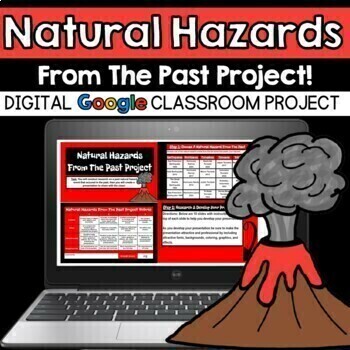Natural Hazards From The Past Project! - Google - Distance Learning!
- Google Drive™ folder

What educators are saying
Description
Natural Hazards From The Past Project!
Step 1: Students chose a natural hazard event that occurred in the past from a list.
Natural hazards events list includes:
- Earthquakes: San Francisco Earthquake 1906, Haiti Earthquake 2010, The Great Alaska Earthquake 1964, San Francisco Earthquake 1989
- Hurricanes: Hurricane Katrina 2005, Hurricane Harvey 2017, Hurricane Sandy 2012, Hurricane Laura 2020
- Tornadoes: Nashville Tornado 2020, Moore Tornado 2013, Joplin Tornado 2011, Tri-State Tornado 1925
- Tsunamis: Japan Tsunami 2011, Indonesia Tsunami 2004, Krakatau, Indonesia 1883, Sunda Strait Tsunami 2018
- Volcanoes: Mount Pinatubo, 1991, Mount Vesuvius A.D. 79, Mount St. Helens 1980, Kīlauea Volcano 2018
Step 2: Students then research the natural hazard event and develop a Google Slides Presentation. Students are given instructions to develop 10 slides with specific information to include for each slide. Students research the natural hazard event and include the where, when, how, why, detectability, mitigation used/developed, how people were affected by the event, the magnitude of the event, etc.
Rubric for grading presentations is included! It can be printed or used digitally!
Extension: Students can present their natural hazard event to their classmates. A note-taking document is included in this product. As their classmates present, students write two interesting facts they learned about the natural hazard.
- This product is great for DISTANCE LEARNING. 100% Digital.
- This product requires no teacher prep - simply post the Google Slides/Good Doc onto Google Classroom for students!
- This product is editable to meet your needs!


